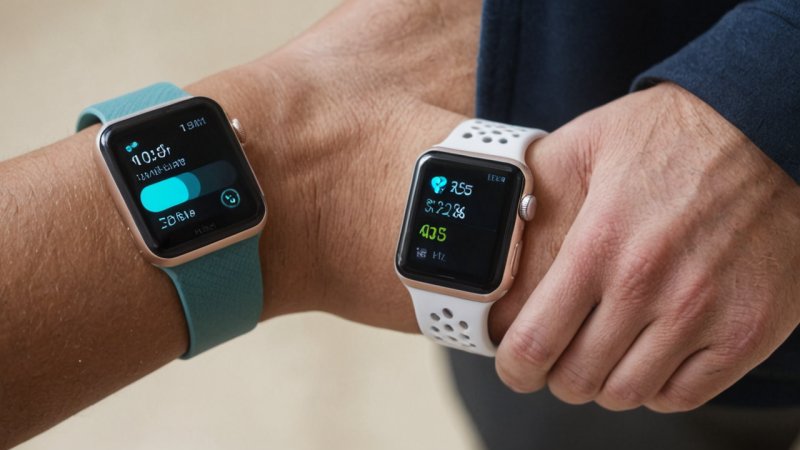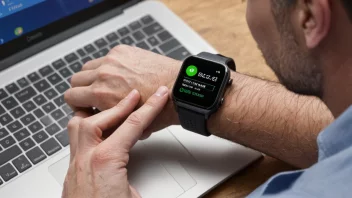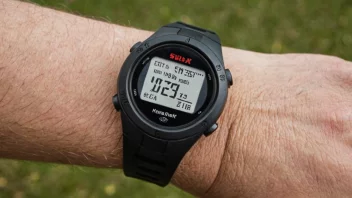In the realm of fitness technology, biometric wearables have become indispensable for health enthusiasts and casual users alike. Two of the most prominent players in this space are Fitbit and Apple Watch, each offering a unique set of features tailored to different user needs. This article will delve into a detailed comparison of these two leading devices, exploring their capabilities, advantages, and drawbacks to help you make an informed decision.
Design and Build Quality
When it comes to wearable technology, the design and build quality are critical factors for many users. Both Fitbit and Apple Watch have distinct aesthetics and functional designs.
Fitbit
Fitbit devices, such as the Fitbit Charge 5, are designed with fitness and health tracking in mind. They feature a sleek, minimalistic design that is lightweight and comfortable for all-day wear. The display is often touchscreen-enabled, allowing for easy navigation through various health metrics.
Apple Watch
On the other hand, the Apple Watch, especially the Series 8, presents a more premium look with a customizable watch face and various band options. The larger screen offers a vibrant display, making it not just a fitness tracker but also a stylish accessory. However, the Apple Watch can be bulkier than many Fitbit models, which may not appeal to all users.
Health and Fitness Tracking Features
The primary purpose of biometric wearables is to monitor health metrics, and both Fitbit and Apple Watch excel in this area, albeit with different focuses.
Fitbit
Fitbit is renowned for its comprehensive fitness tracking capabilities. It typically includes features like:
- Heart Rate Monitoring: Continuous heart rate tracking throughout the day.
- Sleep Tracking: Detailed analysis of sleep patterns and quality.
- Activity Tracking: Steps taken, calories burned, and active minutes.
- Workout Modes: Specific modes for various activities such as running, cycling, and swimming.
This focus makes Fitbit devices excellent for those who are serious about their fitness and health.
Apple Watch
While the Apple Watch also tracks a wide range of fitness metrics, it offers additional features that enhance its utility:
- ECG and Blood Oxygen Monitoring: Advanced health features that allow users to conduct electrocardiograms and measure blood oxygen levels.
- Fitness Plus Integration: Access to workout videos and coaching through Apple Fitness+.
- Fall Detection: Automatically detects falls and can call emergency services.
These features make the Apple Watch a more robust health-monitoring device, appealing to users looking for comprehensive health insights.
Battery Life
Battery longevity is a crucial consideration, especially for those who lead an active lifestyle.
Fitbit
Fitbit devices generally boast impressive battery life, often lasting up to 7-10 days on a single charge, depending on usage and model. This extended battery life means less frequent charging, which is a significant advantage for users who want a hassle-free experience.
Apple Watch
In contrast, the Apple Watch typically offers a battery life of around 18-24 hours. While this is sufficient for daily use, it requires more regular charging, especially if you utilize power-intensive features like GPS and the always-on display.
Smart Features and Connectivity
Both wearables offer smart features that enhance their functionality beyond fitness tracking.
Fitbit
Fitbit has made strides in integrating smart features, including:
- Notifications: Receive call, text, and app notifications directly on your wrist.
- Fitbit Pay: Contactless payment feature available on select models.
- Music Control: Control music playback on your smartphone.
However, it lacks the extensive app ecosystem that the Apple Watch offers.
Apple Watch
The Apple Watch shines in this category, with features such as:
- App Ecosystem: Access to thousands of apps tailored for various needs.
- Siri Integration: Voice-activated assistance for hands-free operation.
- Apple Pay: Seamless payment integration with Apple services.
For users looking for a smartwatch experience combined with fitness tracking, the Apple Watch is the clear winner.
Price and Value
Price is always a determining factor when choosing between gadgets.
Fitbit
Fitbit devices are generally more budget-friendly, with prices ranging from $100 to $250 depending on the model and features. This makes them accessible to a wider audience, especially those primarily interested in fitness tracking.
Apple Watch
The Apple Watch, on the other hand, starts at around $399 for the base model and can go up significantly with additional features and materials. While it offers more advanced capabilities, the higher cost may not be justifiable for everyone.
Conclusion
In summary, both Fitbit and Apple Watch offer robust biometric wearables that cater to different user needs. If your primary focus is on fitness and health tracking, with an emphasis on battery life and affordability, Fitbit is an excellent choice. However, if you’re looking for a multifunctional smartwatch that provides advanced health metrics and a broad app ecosystem, the Apple Watch is the way to go. Ultimately, your choice should reflect your lifestyle, budget, and the specific features that matter most to you.






